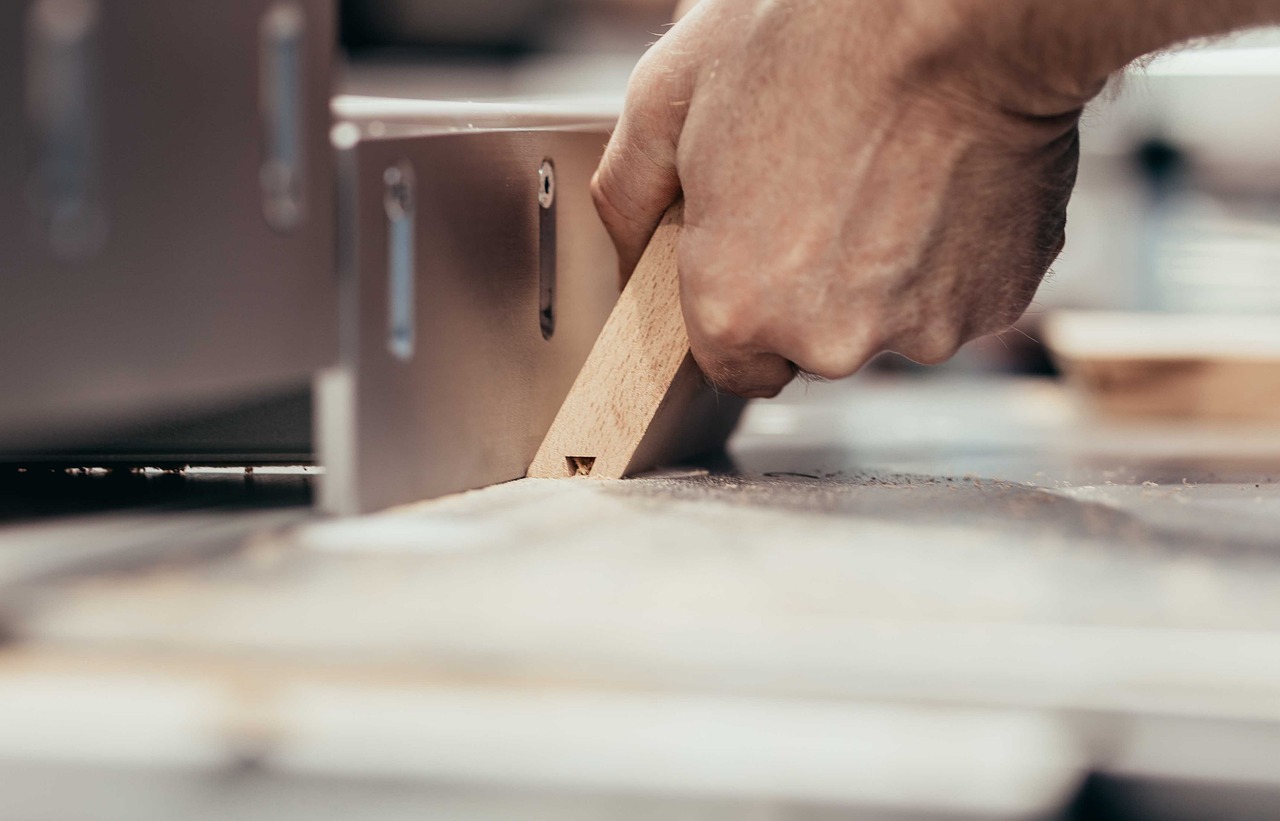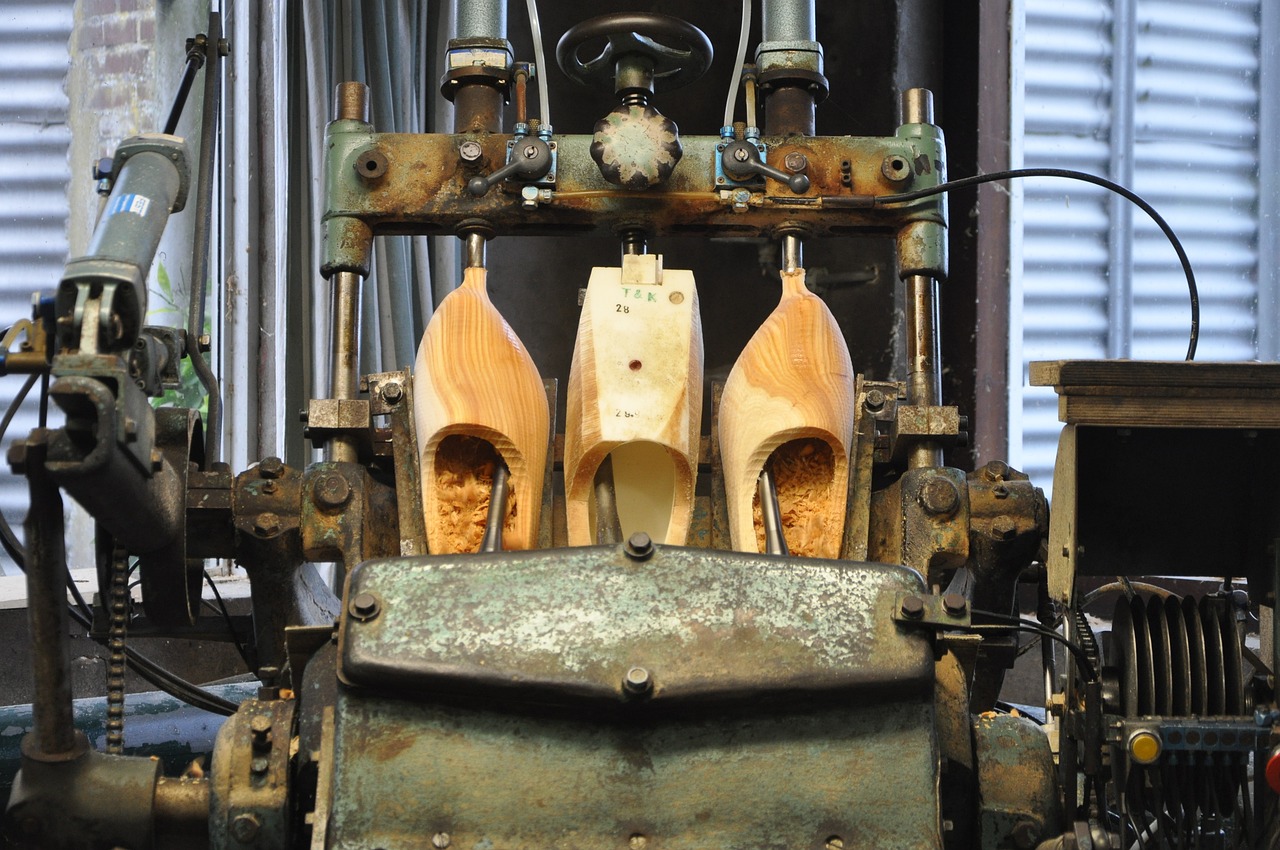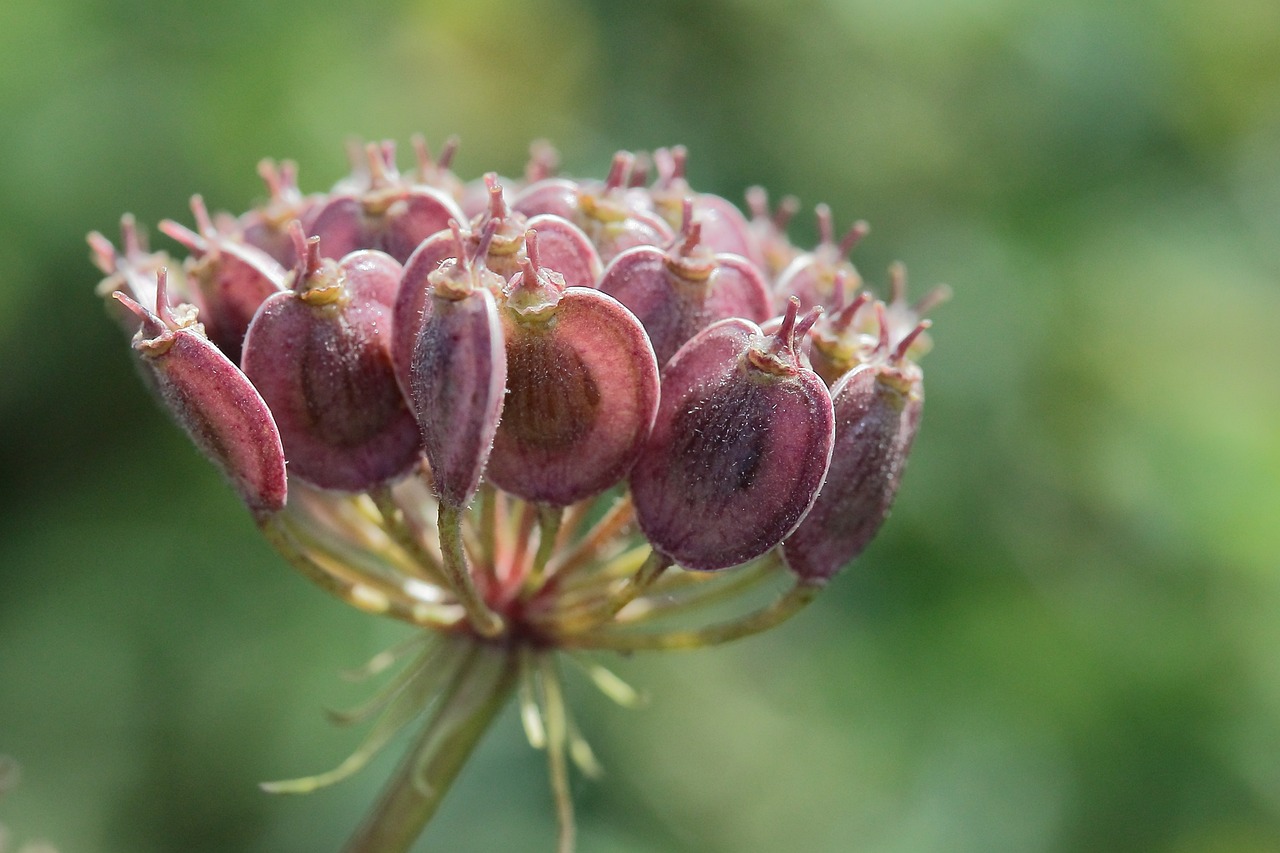How to Build a Wooden Plant Stand From Scratch
Creating your own wooden plant stand can be a rewarding project that not only enhances your home decor but also allows you to showcase your beloved plants in style. Imagine walking into your living room and being greeted by a beautiful array of greenery, all perfectly displayed on a custom-made stand that reflects your personal taste! In this article, we will guide you through the entire process of building a wooden plant stand, from choosing the right materials to adding those final touches that will make your project stand out. Whether you're a seasoned DIY enthusiast or a beginner looking to try something new, this guide is designed to be easy to follow and packed with helpful tips.
When embarking on your plant stand journey, the first step is selecting the right type of wood. The wood you choose will significantly impact both the durability and aesthetic appeal of your stand. For instance, hardwoods like oak and maple are known for their resilience and beautiful grain patterns, making them ideal for a long-lasting piece. On the other hand, softwoods such as pine or cedar are lighter and often more affordable, but they may not hold up as well over time. Consider the following factors when choosing your wood:
- Durability: Will it withstand the weight of your plants?
- Aesthetics: Does it match your home decor?
- Cost: Is it within your budget?
Ultimately, the best wood for your plant stand will depend on your specific needs and preferences. Don't forget to also consider how the wood will be treated or finished later on, as this can enhance its longevity and appearance.
Before diving into the construction phase, it’s essential to gather all the tools you'll need. Having the right tools on hand not only makes the process smoother but also ensures that you can achieve the best results. Here’s a quick rundown of the tools you should have ready:
- Measuring Tape: For accurate measurements.
- Square Tool: To ensure your cuts are straight and true.
- Saw: A circular saw or miter saw works best for cutting wood.
- Drill: For making holes and securing pieces together.
- Sandpaper: To smooth out edges and surfaces.
Having these tools at your disposal will help you work efficiently and effectively, allowing you to focus on creating a stunning plant stand that you can be proud of.
Once you have your wood and tools ready, it's time to get precise with your measurements and cuts. Accurate measurements are crucial for ensuring that your plant stand is sturdy and stable. Start by measuring the height and width you want for your stand, keeping in mind the size of the plants you plan to display. A good rule of thumb is to make the stand at least 24 inches tall for optimal visibility.
Next, use your saw to cut the wood according to your measurements. Remember, the quality of your cuts can make or break your project, so take your time and double-check your measurements before cutting. If you're new to using a saw, practice on some scrap wood first to get comfortable with the process.
Marking your cuts accurately is a vital step in the woodworking process. To achieve clean, straight lines, use a measuring tape to measure the desired length, and then mark it with a pencil. A square tool can help you draw perfectly perpendicular lines, ensuring that your cuts are straight. This attention to detail will pay off when it comes time to assemble your stand.
Different cutting techniques can yield different results, so it's essential to understand your options. For example:
- Straight Cuts: Ideal for creating the basic structure of your stand.
- Angled Cuts: Useful for creating unique designs or joining pieces at a specific angle.
Experimenting with these techniques can add a personal touch to your plant stand, making it truly one-of-a-kind.
After all your pieces are cut, it's time for the fun part: assembling your plant stand! Begin by laying out your pieces in the desired configuration. Use wood glue and screws to secure the joints, ensuring everything is tightly held together. For extra stability, consider adding corner brackets or dowels. As you work, keep checking your measurements to ensure everything is aligned properly. This step is where your hard work in measuring and cutting pays off!
Now that your stand is assembled, it’s time to add some finishing touches. This is where you can really let your creativity shine! Sanding the wood will smooth out any rough edges and prepare it for staining or painting. Depending on the look you want, you can choose to stain the wood to enhance its natural grain or paint it in a color that complements your home decor.
Choosing between paint and stain can significantly impact the final appearance of your plant stand. Paint offers a wide range of colors and finishes, allowing you to create a bold statement piece. However, it can hide the natural beauty of the wood. Stain, on the other hand, enhances the wood's grain and texture while providing a more natural look. Consider what best fits your style and the overall aesthetic of your space.
Finally, don’t forget to seal your plant stand! A good sealant will protect your wood from moisture and wear, ensuring that your creation lasts for years to come. There are various sealants available, including polyurethane and varnish. Follow the manufacturer's instructions for application, and make sure to allow adequate drying time before placing your plants on the stand.
Q: How long will it take to build a wooden plant stand?
A: The time it takes can vary depending on your experience level and the complexity of your design, but most projects can be completed in a day.
Q: What type of wood is best for outdoor plant stands?
A: For outdoor use, consider using cedar or redwood, as they are naturally resistant to moisture and insects.
Q: Can I customize the size of my plant stand?
A: Absolutely! You can adjust the dimensions to fit your specific needs and the space you have available.

Choosing the Right Wood
When it comes to building your own wooden plant stand, the choice of wood is not just a matter of aesthetics; it plays a crucial role in the overall durability and functionality of your project. Imagine your plant stand as the foundation of a house; if the foundation isn't strong, everything built on top is at risk. The right wood can enhance the beauty of your plants while ensuring that your stand lasts for years to come. So, what should you consider when selecting wood for your plant stand?
First off, let’s talk about the different types of wood available. Each type has its unique characteristics, which can influence not only the look of your stand but also its resistance to the elements. Here are a few popular options:
- Pine: A readily available softwood that is easy to work with and budget-friendly. However, it may not be as durable as hardwoods and can be prone to dents and scratches.
- Oak: Known for its strength and durability, oak is a hardwood that can withstand the test of time. It has a beautiful grain that adds elegance to your plant stand.
- Cedar: This wood is naturally resistant to moisture and decay, making it an excellent choice for outdoor plant stands. The aromatic scent and beautiful reddish hue are added bonuses!
- Maple: Another hardwood option, maple is known for its fine, consistent grain. It’s sturdy and can be stained or painted to match your décor.
When selecting wood, consider where you plan to place your plant stand. If it's going to be outside, you’ll want to opt for a wood that can withstand the elements, such as cedar or pressure-treated lumber. For indoor use, softer woods like pine or maple can work beautifully, especially if you plan on painting or staining them.
Another factor to consider is the thickness of the wood. Thicker boards will provide more stability, especially if you plan on displaying larger plants. A good rule of thumb is to use at least 1-inch thick boards for the main structure. This will ensure that your plant stand can support the weight of your plants without any wobbling or bending.
Lastly, don’t forget about sustainability! If you’re environmentally conscious, look for woods that are certified by organizations like the Forest Stewardship Council (FSC). This certification ensures that the wood is sourced responsibly, helping to protect our forests for future generations.
In summary, choosing the right wood for your plant stand involves considering factors like durability, appearance, and sustainability. Take your time to explore different options, and don’t hesitate to ask for advice at your local hardware store. The right choice will not only enhance the beauty of your plants but also create a sturdy, lasting piece that you can be proud of for years to come!
Q: What type of wood is best for indoor plant stands?
A: Softwoods like pine or hardwoods like maple are great for indoor plant stands due to their workability and aesthetic appeal.
Q: Can I use untreated wood for outdoor plant stands?
A: It's not recommended, as untreated wood can rot or warp when exposed to moisture. Opt for treated wood or naturally rot-resistant species like cedar.
Q: How thick should the wood be for a sturdy plant stand?
A: At least 1-inch thick boards are advisable to ensure stability and support for your plants.
Q: What is the best way to finish wood for a plant stand?
A: Sanding, staining, and sealing are effective methods to enhance the appearance and protect the wood from moisture and wear.

Gathering Necessary Tools
Before diving into the exciting world of woodworking, it's essential to gather all the necessary tools that will help you create your stunning wooden plant stand. Imagine embarking on a journey without the right gear; it can be a bit chaotic, right? Having the right tools not only makes the process smoother but also ensures that your final product is sturdy and aesthetically pleasing. So, what do you need? Let's break it down!
First and foremost, you’ll need some basic hand tools. A measuring tape is your best friend in this project. Accurate measurements are critical for ensuring that all parts fit together perfectly. Alongside that, a square is indispensable for marking right angles, ensuring your cuts are clean and precise. Don’t forget a pencil for marking your wood – trust me, trying to remember where to cut can lead to some serious mistakes!
Next up, you’ll need cutting tools. A hand saw or a miter saw will work wonders for making straight cuts, while a jigsaw is perfect for any curved cuts or more intricate designs you might want to incorporate. If you’re feeling adventurous, a circular saw can also speed up the process for larger pieces of wood. Just remember, safety first! Always wear protective eyewear when using power tools.
Now, let’s talk about joining your pieces together. A drill is essential for making holes for screws or dowels, which will hold your plant stand securely. You’ll also need a set of screws or wood glue for strong joints. If you opt for screws, a screwdriver will be necessary to tighten everything down. And if you’re using glue, make sure to have some clamps on hand to hold the pieces together while the glue dries.
Finally, finishing your plant stand is just as important as building it. For this, you’ll need some sanding blocks or an electric sander to smooth out rough edges and surfaces. Once you’ve achieved that silky finish, you’ll want to protect your work with either a paintbrush or a roller for applying paint or stain. A sealant will also be crucial for protecting your stand from moisture and wear over time.
To summarize, here’s a quick table of the essential tools you’ll need:
| Tool | Purpose |
|---|---|
| Measuring Tape | For accurate measurements |
| Square | To mark right angles |
| Pencil | For marking cuts |
| Hand Saw/Miter Saw | For straight cuts |
| Jigsaw | For curved cuts |
| Drill | For making holes |
| Screws/Wood Glue | For joining pieces |
| Sanding Blocks/Electric Sander | For smoothing surfaces |
| Paintbrush/Roller | For applying finish |
| Sealant | For protecting the wood |
By gathering these tools, you’re setting yourself up for success! Each tool plays a vital role in the creation of your wooden plant stand, ensuring that it’s not only functional but also a beautiful addition to your home. So, are you ready to get started on this woodworking adventure?
Q: What type of wood is best for a plant stand?
A: Hardwoods like oak or maple are excellent choices for durability, but softer woods like pine can also work if you’re looking for something more budget-friendly.
Q: Do I need any special skills to build a plant stand?
A: Not at all! Basic woodworking skills are helpful, but this project is beginner-friendly and can be completed with patience and attention to detail.
Q: How long will it take to build a wooden plant stand?
A: Depending on your experience and the complexity of your design, it could take anywhere from a few hours to a couple of days, especially if you include drying time for finishes.
Q: Can I customize the design of my plant stand?
A: Absolutely! Feel free to get creative with the dimensions, number of shelves, and finishes to make it uniquely yours.

Measuring and Cutting the Wood
When it comes to building a wooden plant stand, measuring and cutting the wood accurately is crucial. Imagine trying to assemble a jigsaw puzzle with pieces that don’t fit; that’s what it feels like when your measurements are off. To start, you’ll want to gather a few essential tools: a measuring tape, a square, a saw, and a pencil. These tools are your best friends in this woodworking adventure.
First, let’s talk about measuring. It’s not just about getting a number; it’s about ensuring that each piece of wood will fit together perfectly. Always measure twice and cut once! This old saying holds true in woodworking. Use your measuring tape to determine the length of each piece you need for your plant stand. Mark your measurements clearly with a pencil, and use a square to ensure your lines are straight. A straight line can make or break the look of your finished product.
Once you have your measurements marked, it’s time for the exciting part: cutting the wood. Depending on the design of your plant stand, you may need to make different types of cuts. For straight cuts, a circular saw is often the best choice, as it provides a clean edge. If your design requires angles, a miter saw is ideal for achieving those precise cuts. Remember, the quality of your cuts will impact the overall stability and appearance of your plant stand.
Here’s a quick tip: when cutting, always wear safety goggles and a dust mask to protect yourself from debris. Safety should always come first! As you cut, keep an eye on your marked lines. If you wander off course, don’t fret; just sand down the edges later to smooth them out. However, try to stay as true to your lines as possible to minimize extra work.
To give you a clearer picture of what this process looks like, here’s a simple table summarizing the tools and their purposes:
| Tool | Purpose |
|---|---|
| Measuring Tape | For measuring lengths accurately |
| Square | Ensures straight lines and accurate angles |
| Circular Saw | For making straight cuts |
| Miter Saw | For making angled cuts |
| Pencil | For marking measurements |
After cutting, take a moment to inspect each piece. Are the edges smooth? Are the cuts straight? If not, you can use sandpaper to refine the edges and ensure everything fits together snugly. A little extra attention to detail during the measuring and cutting phase can save you a lot of headaches later on, so take your time and enjoy the process!

Marking Your Cuts
When it comes to building a wooden plant stand, accurately is a fundamental step that can make or break your project. Think of it as drawing the blueprint for a house; without precise lines, the structure will be shaky at best. To begin, you'll want to gather your materials: a measuring tape, a pencil, and a square tool. These are your best friends in ensuring that every cut you make is spot on.
First, measure the length of wood you need for each piece of your plant stand. It's crucial to double-check your measurements because, as they say, "measure twice, cut once." Once you have your measurements, use the square tool to draw straight lines across the wood. This is where your pencil comes into play—make sure your marks are visible but not too deep, as you don't want them to show through your finish later.
Here’s a quick tip: when marking your cuts, consider using different colored pencils for different pieces. This simple trick can help you keep track of which piece goes where, especially if you’re working with multiple boards. It’s like having a color-coded map for your project!
After you’ve marked your cuts, it’s time to prepare for the saw. If you’re using a circular saw, make sure to add a little extra length to your marks, as the blade width will eat into your wood. If you're using a hand saw, you might want to use a straight edge to guide your cuts. This will help you maintain a steady hand and avoid any wobbly edges that could compromise the look of your plant stand.
In addition to straight cuts, you might need to make angled cuts for a more dynamic design. For these, use a protractor to measure the angle accurately before marking it on the wood. Remember, a little bit of patience goes a long way! Take your time to ensure that every mark is precise; this will save you a ton of frustration down the road.
Ultimately, marking your cuts is not just about getting it right; it's about setting yourself up for success. With the right tools and techniques, you can ensure that your cuts are clean and your plant stand will be sturdy and beautiful. So, grab your measuring tape and pencil, and let’s get to work!
- What tools do I need to mark my cuts? You will need a measuring tape, pencil, and a square tool for straight lines.
- How can I ensure my cuts are straight? Using a square tool and a straight edge will help guide your saw for straight cuts.
- What if I make a mistake while marking? Don't worry! You can always sand down any mistakes or use wood filler to correct small errors.

Cutting Techniques
When it comes to crafting your wooden plant stand, the you employ can significantly influence the overall quality and appearance of your project. Think of cutting as the foundation of your stand; if the base is uneven or poorly executed, it can lead to a wobbly structure. There are several methods to consider, each with its own set of advantages and ideal applications.
Firstly, let's talk about straight cuts. This is the most common technique and is essential for creating clean edges that fit together seamlessly. To achieve a straight cut, you can use a circular saw or a miter saw. Ensure that your saw is calibrated correctly and that you follow a straight line, which can be aided by using a guide or a straight edge. Remember, precision is key here; even a slight deviation can lead to mismatched pieces.
Next up are angled cuts, which are often necessary for creating joints or adding decorative elements to your plant stand. The miter saw is particularly useful for this type of cut. When making angled cuts, it's crucial to measure and mark your angles accurately. A pro tip is to use a protractor or an angle finder to ensure you’re cutting at the correct angle. This attention to detail will pay off when you assemble the stand, as everything will fit together beautifully.
Another technique worth mentioning is the ripping cut, which is used to cut a board along its length. This is often required when you're working with wider boards that need to be narrowed down to fit your design. A table saw is perfect for this task, as it provides stability and control. Always remember to use push sticks for safety and to maintain a firm grip on the wood.
Finally, let's not overlook the importance of finishing cuts. After making your primary cuts, you may notice some rough edges or splinters. To achieve a polished look, consider using a jigsaw or a sanding block to smooth out these areas. This step is crucial, especially if you plan to stain or paint your plant stand later. A smooth surface not only looks better but also helps the finish adhere more effectively.
In summary, mastering these cutting techniques will enhance the quality of your wooden plant stand. Whether you're making straight cuts, angled cuts, ripping, or finishing, each method plays a vital role in the construction process. So, take your time, measure twice, and cut once. Your patience and attention to detail will shine through in your finished product!
- What type of saw should I use for cutting wood? A miter saw is great for angled cuts, while a circular saw is ideal for straight cuts.
- How can I ensure my cuts are accurate? Always measure carefully and use a straight edge or guide to help keep your cuts straight.
- Is it necessary to sand after cutting? Yes, sanding is important to remove any rough edges and prepare the surface for finishing.
- What safety precautions should I take while cutting? Always wear safety goggles and use push sticks to keep your hands away from the blade.

Assembling the Plant Stand
Now that you have all your pieces cut and ready to go, it’s time to dive into the exciting part: assembling your wooden plant stand! This stage is where your vision starts to take shape, and trust me, it’s incredibly satisfying to see it all come together. First, ensure you have a clean workspace; a clutter-free area will make the process smoother and help you avoid any accidents. You’ll want to lay out all your pieces to get a clear view of how they will fit together before you start attaching anything.
Begin by identifying the base of your plant stand. This will typically consist of four legs and a top support. The legs will provide stability, while the top support will hold your plants. An essential tip here is to use wood glue in conjunction with screws. While screws provide the mechanical strength needed, wood glue adds an extra layer of durability by bonding the wood fibers together. Apply a generous amount of glue to the ends of the legs where they meet the base, and then use a drill to insert screws at an angle, which will help create a strong joint.
As you assemble, it’s crucial to check that everything is square. You can achieve this by measuring diagonally from corner to corner; both measurements should be equal. If they aren’t, you may need to adjust your pieces before securing them fully. A square tool can be your best friend here, ensuring that your corners are perfect and your stand won’t wobble when it’s finished.
Once the base is secure, it’s time to attach the top support. This piece is where your pots will sit, so make sure it’s sturdy enough to hold the weight of your plants. Similar to the legs, apply wood glue to the ends of the top support and fasten it with screws. For added stability, consider using corner brackets at the joints. These little metal pieces can significantly enhance the strength of your stand, especially if you’re planning to place larger pots on it.
After you’ve secured the top, take a step back and admire your work! It’s always a good idea to give your plant stand a gentle shake to ensure everything is tight and secure. If you notice any wobbling, you can add small wooden shims under the legs to stabilize it. Once you’re satisfied with the assembly, it’s time to move on to the finishing touches that will make your plant stand truly shine.
In summary, assembling your plant stand is a blend of patience and creativity. By using wood glue and screws, ensuring everything is square, and possibly incorporating corner brackets, you’ll create a sturdy and attractive piece that will be a perfect home for your plants. Remember, the joy of DIY comes not only from the end product but also from the journey of creating it!

Finishing Touches
Once your wooden plant stand is assembled, the fun part begins: adding the that will not only enhance its aesthetic appeal but also ensure its longevity. Think of this stage as the icing on the cake; it’s where you can really let your creativity shine. So, what are the best ways to finish your plant stand? Let’s dive into some fantastic options!
First up is sanding. This step is crucial because it smooths out any rough edges and ensures that your stand is pleasant to touch. Imagine running your hand over a beautifully polished surface—satisfying, right? Use a medium-grit sandpaper followed by a fine-grit one to achieve that silky finish. Don’t rush this part; take your time to sand every corner and crevice. You’ll be glad you did when you see the final result!
Next, let's talk about staining versus painting. Both options can dramatically change the look of your plant stand, but they come with their own sets of pros and cons. Staining allows the natural grain of the wood to shine through, giving it a rustic and elegant look. On the other hand, paint can add a pop of color and personality to your stand. If you’re leaning towards stain, consider using a gel stain for a more controlled application. However, if you opt for paint, make sure to choose a high-quality exterior paint that can withstand the elements if your stand will be outdoors.
After you’ve made your choice between paint and stain, it’s time to consider sealing your plant stand. Sealing is essential, especially if your stand will be exposed to moisture. A good sealant will protect your wood from water damage and wear over time. There are various types of sealants available, such as polyurethane, varnish, and water-based sealers. Each has its own application method and drying time, so it’s crucial to read the instructions carefully. Apply the sealant with a brush or cloth, ensuring even coverage, and allow it to dry completely before placing any plants on it.
Lastly, don't forget about the little details. Adding felt pads to the bottom of your plant stand can prevent scratches on your floors, while decorative elements like stencils or wood burns can personalize your piece even further. You can also consider adding hooks for hanging plants or tools, making your stand not just a display but a functional part of your gardening routine.
In summary, the finishing touches on your wooden plant stand are what will set it apart. With careful sanding, a thoughtful choice between paint and stain, proper sealing, and attention to detail, you can create a stunning piece that not only showcases your plants but also adds charm to your space. So, roll up your sleeves and get creative—your plant stand is about to become a work of art!
- What type of wood is best for a plant stand? - Softwoods like pine or cedar are great for indoor stands, while hardwoods like oak or maple are better for outdoor use.
- How long does it take for stain or paint to dry? - Generally, most stains and paints take about 2-4 hours to dry to the touch, but it’s best to wait 24 hours before applying a second coat or using the stand.
- Can I use my plant stand outdoors? - Yes, but make sure you use a weather-resistant wood and seal it properly to protect against moisture and UV damage.

Painting vs. Staining
When it comes to finishing your wooden plant stand, the choice between painting and staining can feel overwhelming. After all, both options can dramatically affect the final look and feel of your project. So, how do you decide? Let’s dive into the pros and cons of each to help you make an informed choice.
Painting offers a wide range of colors and finishes, allowing you to express your creativity and match your plant stand to your home decor. It creates a solid barrier on the surface of the wood, providing excellent protection against moisture and wear. However, one downside is that paint can sometimes chip or peel over time, particularly if the wood is not properly prepared beforehand. Additionally, paint can obscure the natural beauty of the wood grain, which might be a deal-breaker for some.
On the other hand, staining enhances the wood's natural beauty while providing a subtle color that allows the grain to shine through. Stains penetrate the wood, offering a more natural finish and often requiring less maintenance than paint. However, stains can be less protective than paint, especially if not sealed properly. They might also require reapplication over time, particularly in high-traffic areas or if the plant stand is exposed to the elements.
To help you visualize the differences, here’s a quick comparison:
| Feature | Painting | Staining |
|---|---|---|
| Color Variety | Wide range of colors | Natural wood tones |
| Protection | Good protection against moisture | Less protective, needs sealing |
| Maintenance | May chip or peel, requires touch-ups | Can fade, may need reapplication |
| Appearance | Obscures wood grain | Enhances natural beauty |
Ultimately, the choice between painting and staining your wooden plant stand boils down to your personal style and the intended use of the stand. If you want a vibrant, colorful piece that stands out, painting might be the way to go. However, if you prefer a more classic, natural look that showcases the wood's beauty, staining is likely your best bet. Either way, ensuring that you properly prepare the wood and apply your chosen finish will lead to a stunning and durable result.
Here are some common questions that arise when deciding between painting and staining:
- Can I stain over paint? Generally, it’s not recommended, as the stain will not adhere properly to the paint surface.
- How do I prepare wood for painting or staining? Sand the surface to create a smooth finish and clean off any dust or debris before applying your finish.
- Is one option more environmentally friendly than the other? Many paints contain VOCs (volatile organic compounds), which can be harmful. Look for low-VOC options if you’re concerned about the environment.

Sealing Your Plant Stand
Sealing your plant stand is not just a cosmetic choice; it’s a crucial step in ensuring that your creation stands the test of time. Think of sealants as armor for your wood, protecting it from the elements and daily wear and tear. Moisture can be a wood’s worst enemy, leading to warping, cracking, and even mold growth. By applying a good sealant, you’re essentially giving your plant stand a shield against these threats.
There are various types of sealants available, each with its own set of advantages. Here’s a quick rundown of the most popular options:
| Sealant Type | Advantages | Best For |
|---|---|---|
| Polyurethane | Durable, water-resistant, and available in gloss or satin finishes. | Indoor and outdoor use. |
| Varnish | Provides a hard finish, good UV protection. | Outdoor projects. |
| Wood Oil | Penetrates deep into the wood, enhancing natural grain. | Indoor furniture. |
| Shellac | Quick-drying and non-toxic; great for indoor use. | Indoor decorative items. |
When choosing a sealant, consider the environment where your plant stand will reside. If it’s going to be outdoors, look for a sealant that offers UV protection and is waterproof. For indoor use, you might prefer something that enhances the wood's natural beauty without overpowering it.
Now, let’s talk about the application process. Before you start, make sure the surface of your plant stand is clean and dry. If you’ve sanded the wood, give it a good wipe down to remove any dust particles. Depending on the sealant you choose, you may need to use a brush, roller, or even a spray can for application. Always follow the manufacturer’s instructions for the best results.
Applying the sealant can be a bit like painting a masterpiece; you want to ensure even coverage and avoid drips. Start with thin layers, allowing each coat to dry completely before applying the next. This not only ensures a smooth finish but also enhances the protective qualities of the sealant. Typically, two to three coats are recommended for optimal protection.
Once you’ve sealed your plant stand, give it ample time to cure before placing any plants on it. This waiting period can vary based on the type of sealant used, so be sure to check the product instructions. Patience is key here; rushing can lead to smudges or a compromised finish.
In summary, sealing your plant stand is an essential step that protects your hard work and enhances its beauty. By selecting the right sealant and applying it properly, you ensure that your plant stand will be a stunning addition to your home or garden for years to come.
- How long does it take for the sealant to dry?
Drying times can vary, but most sealants will dry to the touch within a few hours. However, full curing can take up to a week. - Can I use leftover sealant from other projects?
It’s best to use sealants that are compatible with your wood type and intended use. Check the labels for compatibility. - Do I need to sand between coats of sealant?
Sanding between coats can help achieve a smoother finish, but it’s not always necessary. Follow the instructions on your sealant for the best results.
Frequently Asked Questions
- What type of wood is best for a plant stand?
When choosing wood for your plant stand, consider options like pine, cedar, or oak. Pine is affordable and easy to work with, while cedar offers natural resistance to moisture. Oak is sturdy and provides a beautiful finish, making it a great choice for durability and aesthetics.
- What tools do I need to build a wooden plant stand?
You'll need a few essential tools, including a measuring tape, circular saw, square, and drill. These tools help ensure accurate measurements, clean cuts, and secure assembly. Don't forget safety gear like goggles and gloves!
- How do I ensure accurate measurements and cuts?
Start by measuring twice and cutting once! Use your measuring tape to mark the wood clearly, and employ a square to create straight lines. For cutting, a circular saw is ideal for long cuts, while a miter saw can help with angles. Practice makes perfect, so don’t rush the process!
- What are the best methods for assembling the plant stand?
To assemble your plant stand, use wood glue for initial bonding and secure it with screws for added strength. Pre-drilling holes can prevent the wood from splitting. Make sure everything is aligned properly before the glue dries to avoid any crookedness!
- Should I paint or stain my plant stand?
Both options have their perks! Painting offers a wide range of colors and a uniform finish, while staining enhances the wood's natural grain and texture. Consider the look you want and the level of maintenance each option requires before deciding.
- How do I seal my plant stand for protection?
Sealing your plant stand is crucial for protecting it from moisture and wear. You can use a clear polyurethane sealant or a wood varnish. Apply it with a brush in even strokes, and make sure to let it dry completely between coats for the best results.



















